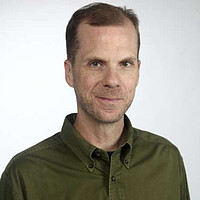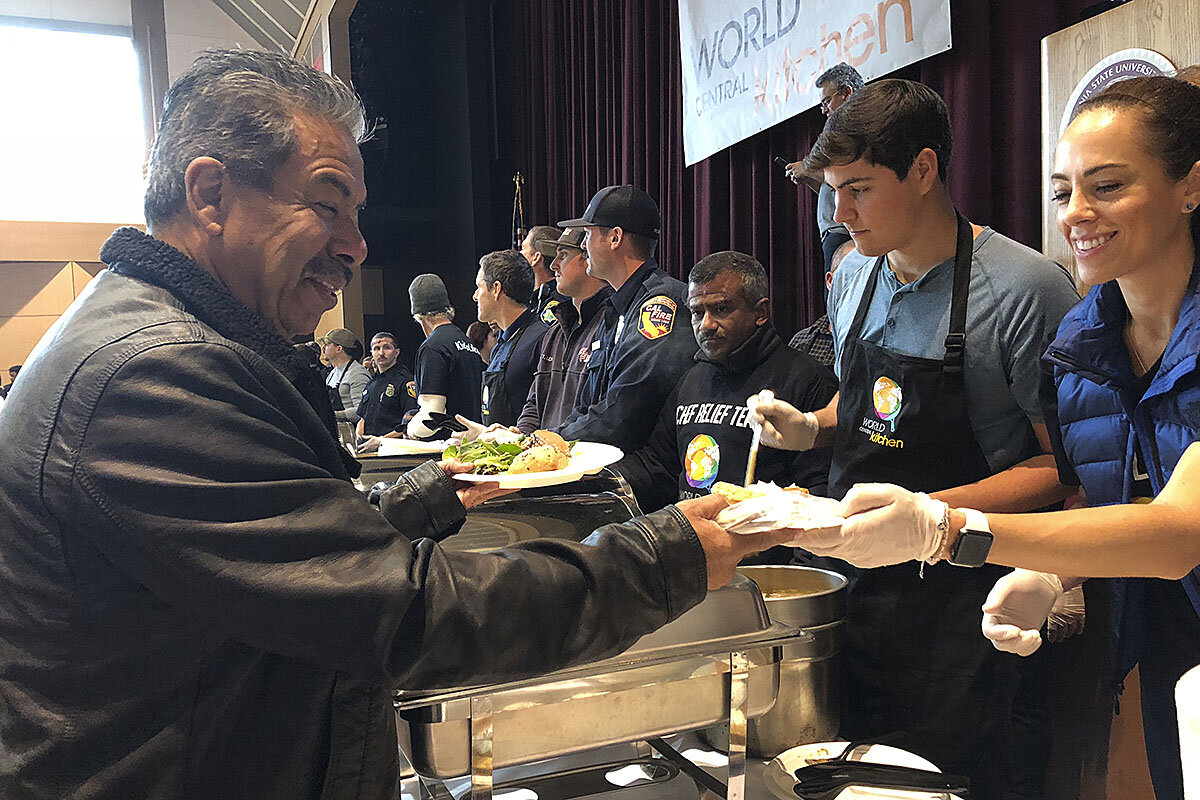California fire survivors face uncertain future
Loading...
| Chico, Calif.
Carmen Chalfant moved to Paradise in 1999. But it might be more fitting to say Paradise moved her.
The Northern California town of 27,000, nestled among towering pines and shimmering lakes in the foothills of the Sierra Nevada, charmed her from the start. She knew after her first visit she would retire there. She loved the unrushed pace as much as the pastoral setting, and she never tired of telling friends, “I live in Paradise!”
Two weeks ago, when the deadliest and most destructive wildfire in California’s history ripped through the city, Ms. Chalfant lost her personal Eden. The flames incinerated her house, her car, and her sense of place.
Why We Wrote This
In the aftermath of tragedies such as California's deadly Camp fire, survivors often face hard choices over whether to return home and rebuild or to start fresh somewhere else.
“Everything — it’s gone,” she says, standing in the gym of the East Ave Church in Chico, 15 miles west of Paradise, which has served as an evacuation center for residents forced to flee their homes. As Chalfant tries to regain control of her life, one aspect of her future has become clear in recent days as rains wash away the fire’s acrid haze. “I’m done with Paradise,” she says, shaking her head. “I won’t go through something like this again.”
Lorraine Sampson arrived at the church with her husband and their three young children on the same apocalyptic day as Chalfant. The family, along with Ms. Sampson’s mother, another relative, and two dogs, jammed into a car and drove toward Chico as smoke blackened the morning sky and ash fell like snow.
A third-generation resident of Magalia, an unincorporated town bordering Paradise, Ms. Sampson escaped with little besides a handful of family photos and the urn that holds the ashes of her infant daughter who died last year. The loss of her house has deepened her resolve to remain in the area.
“I want to go back,” she says, one arm around her eldest daughter, Hailey, who hugged her waist. “This is home. If it burns 10 more times, we’ll rebuild 10 more times.”
The differing perspectives on whether to leave or stay illuminates the thorny choice confronting the estimated 52,000 residents displaced by the so-called Camp Fire that by Friday had been 95 percent contained. Beyond the blaze’s staggering toll to date — 84 people dead and 560 missing, almost 14,000 homes razed, some 153,000 acres scorched — they must answer the question of where to begin again.
The dilemma pits the head against the heart as residents weigh the prospect of future wildfires and the emotional pull of home. The breadth of devastation complicates their decision. The fire has leveled more than 500 commercial buildings and 4,200 other structures, and nobody knows when businesses will return, schools will reopen, or basic services will resume. Given that uncertainty, they wonder if the area will recapture its communal spirit, the essence of the place that made it their own.
“It’s going to take a long, long time for Paradise to recover, if it ever will,” David Bravot says. A retired musician staying at the church, he had learned a day earlier that the fire spared his house, a turn of fortune he describes as “a gentle miracle.”
“What’s left? How long will it take for companies to rebuild? Will people get their jobs back? Who’s going to live there? There’s no way to have any idea right now.”
Pondering what comes next
Wildfires gutted 200 homes in and around Paradise in 2008 and forced the evacuation of thousands of residents from Butte County before firefighting crews could subdue the flames. The Camp Fire showed less restraint.
The blaze roared to life Nov. 8 — the cause is under investigation — and devoured tinder-dry vegetation across a landscape choked by drought as winds gusted above 50 mph. By the time Paradise officials ordered a full evacuation shortly after 9 a.m., the fire had reached the city.
Chalfant found herself trapped in the confusion of a mass exodus as vehicles clogged the four routes out of town and smoke smothered the sun. She abandoned her car after hearing someone yell that people should board an evacuation bus.
But after traveling a mile, the bus stopped as flames crowded the road, and Chalfant and the others stepped out. As she struggled to walk back to her car — at one point falling down and injuring her knee — a couple offered her a ride. They drove out of the burning city in the sudden darkness amid the explosions of propane tanks, fuel pumps, and parked cars.
The wildfires a decade ago worried Chalfant, a retired nurse, yet she had faith that city officials would follow safety suggestions laid out in a grand jury report on the blazes that called for improving the area’s warning systems and evacuation plans. She thinks now that her trust was misplaced, and she intends to move to Port Orchard, Wash., where her two children live with their families. The decision has restored a measure of her self-reliance.
“It’s not like we didn’t know what could happen,” says Chalfant, who could grab only her laptop, cell phone, and medications before fleeing her house. “I’m not going to wait to see if it’s better next time; I almost died this time.”
The Camp Fire ignited on the same day as a sprawling blaze in Southern California that killed three people, and both began less than two months after crews extinguished the largest wildfire in California history. The Mendocino Complex Fire charred nearly 460,000 acres, and so far in 2018, more than 1.6 million acres have burned statewide, the highest total in a decade.
The destruction follows a punishing year of wildfires that caused $12 billion in damage as California, besieged by higher temperatures, lack of rain, and population growth, attempts to adapt to the reality of a year-round fire season.
More than 250 people affected by the Camp Fire wound up at East Ave Church, one of several shelters set up in the area to aid evacuees. They sleep on cots and air mattresses, wear donated clothes and shoes, and ponder whether to resurrect their former lives or start anew elsewhere.
Aaron Anderson, a Marine veteran who moved to Paradise two years ago, saw the flames approaching his cottage and ran to check on an elderly woman who lived next door. The pair escaped in Mr. Anderson’s car, and while the fire claimed his home, he feels a sense of freedom about the future.
“It’s a clean slate, is the way I’m trying to look at it,” says Mr. Anderson, who left behind his three cats in the chaos. “I’ve wanted to live out East for a long time. This might be my chance to do it.”
‘A message from God’
A quarter of Paradise’s residents are 65 and older, and dozens showed up at the church within a day of the fire. The hardship of the past two weeks foretells the adversity that awaits them when they emerge from the limbo into which the blaze has cast them.
“I am still numb,” says Carla Brawt, whose apartment building burned down. “I live in Paradise, but there is no more Paradise. So I don’t know what I’ll do.”
A few miles from the church, the Federal Emergency Management Agency operates an assistance center in a vacant Sears store at the Chico Mall. The line on this weekday afternoon curls out the door and down the sidewalk as hundreds of people wait to apply for housing aid.
Betty Garver and her husband lived in Paradise for 30 years before the Camp Fire reduced their home to ash and rubble. The retired couple will need time to decide whether to return for a fourth decade.
“We don’t know if we’ll rebuild,” says Ms. Garver, leaning on a walker as she leaves the center. “There’s nothing there now except vacant lots, mostly. So we don’t know what the town will look like — or when it will look like a town again.”
Federal and state officials have toured devastated areas of Butte County, including President Trump, Interior Secretary Ryan Zinke, and California Gov. Jerry Brown. Brock Long, the administrator of FEMA, told reporters last week that the region’s recovery would take “several years.”
“You’re not going to be able to rebuild Paradise the way it was,” he added.
The fire has brought into focus what Governor Brown refers to as “the new abnormal” for California — larger wildfires fueled, in part, by climate change. Despite the evident risks, Sampson, the mother of three, views the calamity as a test of character and a chance for residents to prove their resiliency.
“Paradise was close-knit before the fire,” she says. “This will make us 10 times stronger.” She sits in the room that the church has set aside for families, and nearby, her two youngest children watch the animated movie “Up” on a flat-screen TV. “If we give up and don’t rebuild what we had, what does that teach our children? I want to teach my kids to fight.”
As Sampson thinks about the next generation, her mother, Tamantha Delgado, believes the family owes previous generations the honor of returning to Magalia.
“We got 30 family members who are buried in the cemetery there, and we’re not leaving them behind,” Ms. Delgado says. “This is a message from God to do things the right way from now on. It’s a new beginning.”
What remains unknown is when that new beginning will arrive.







